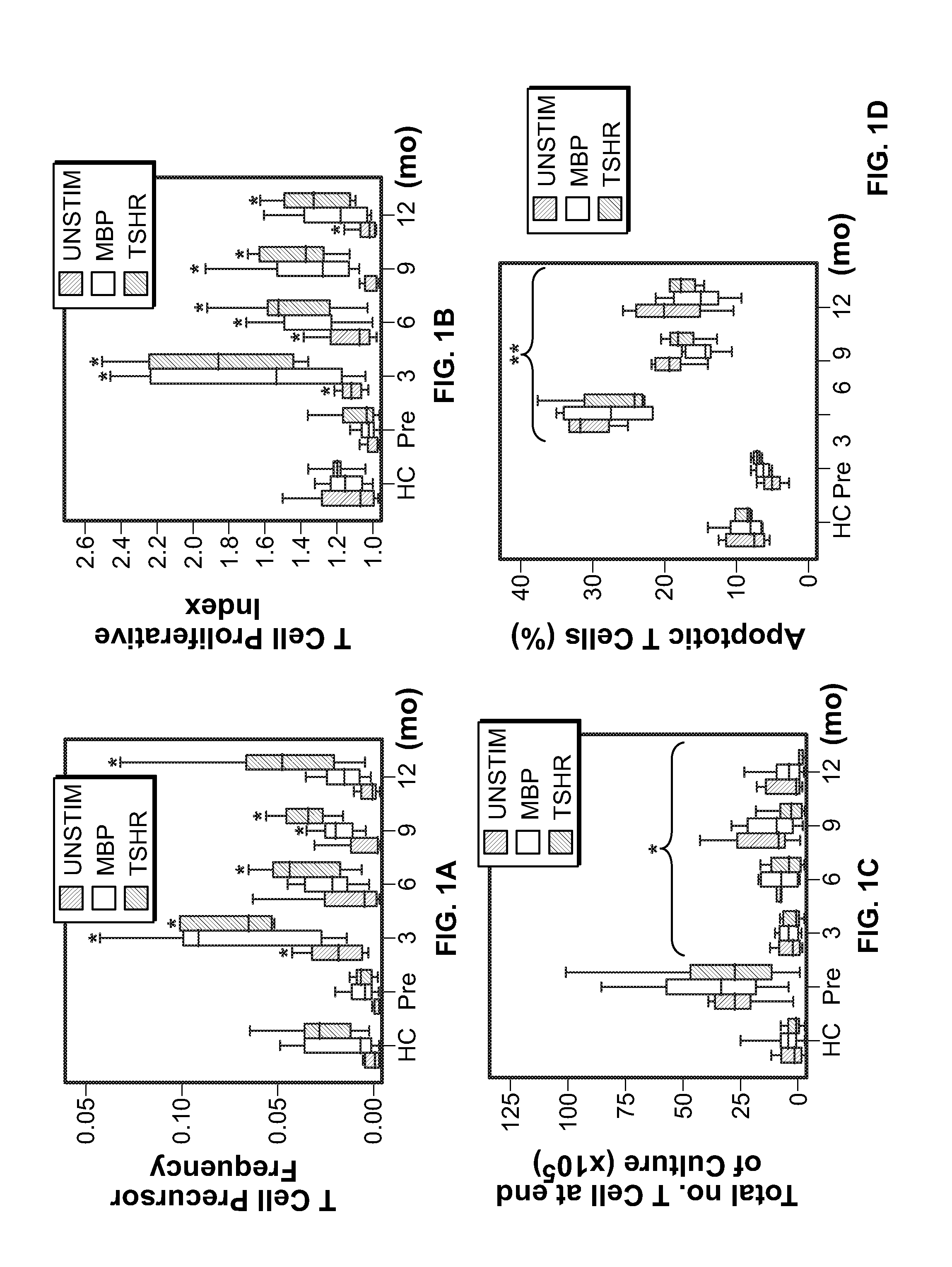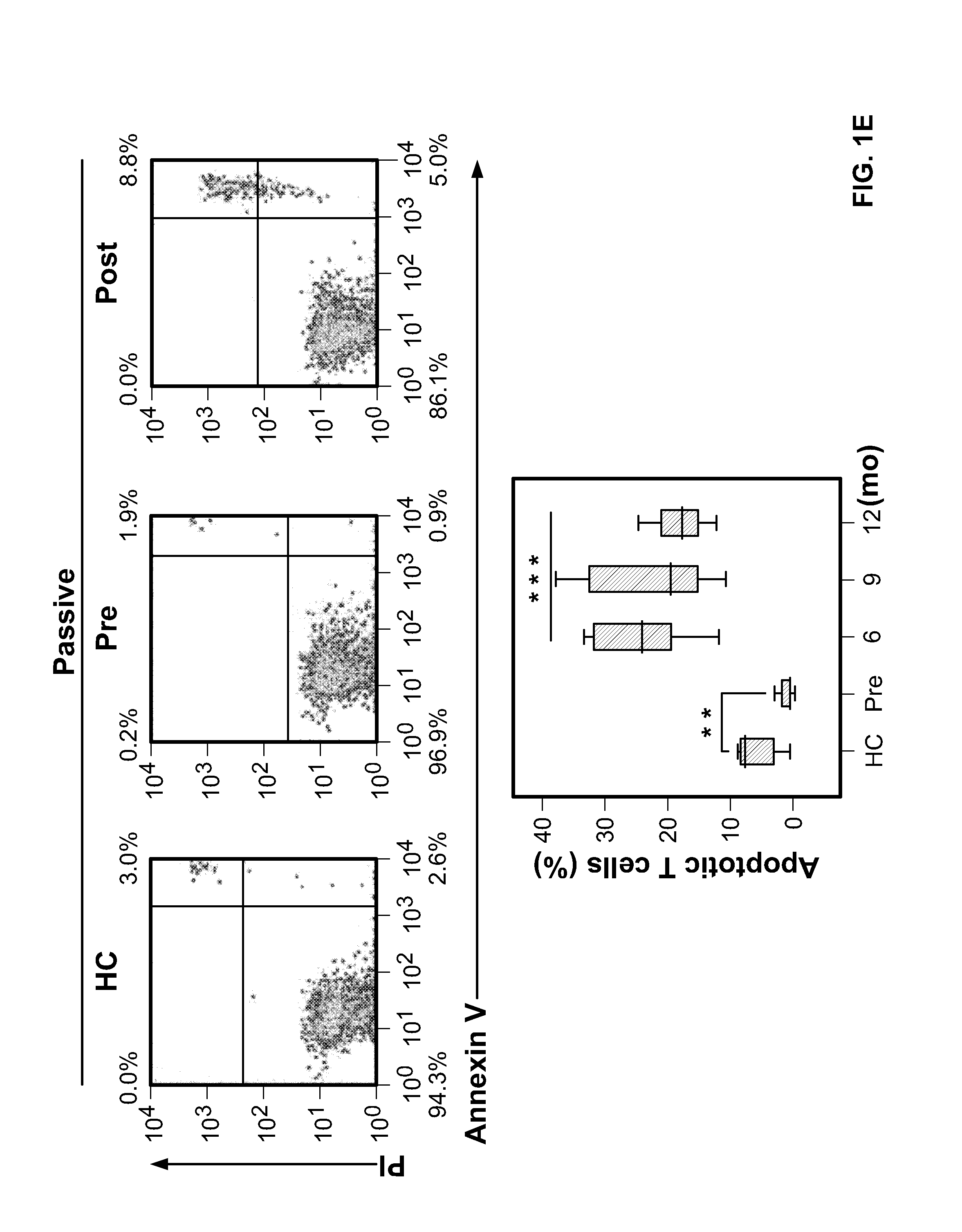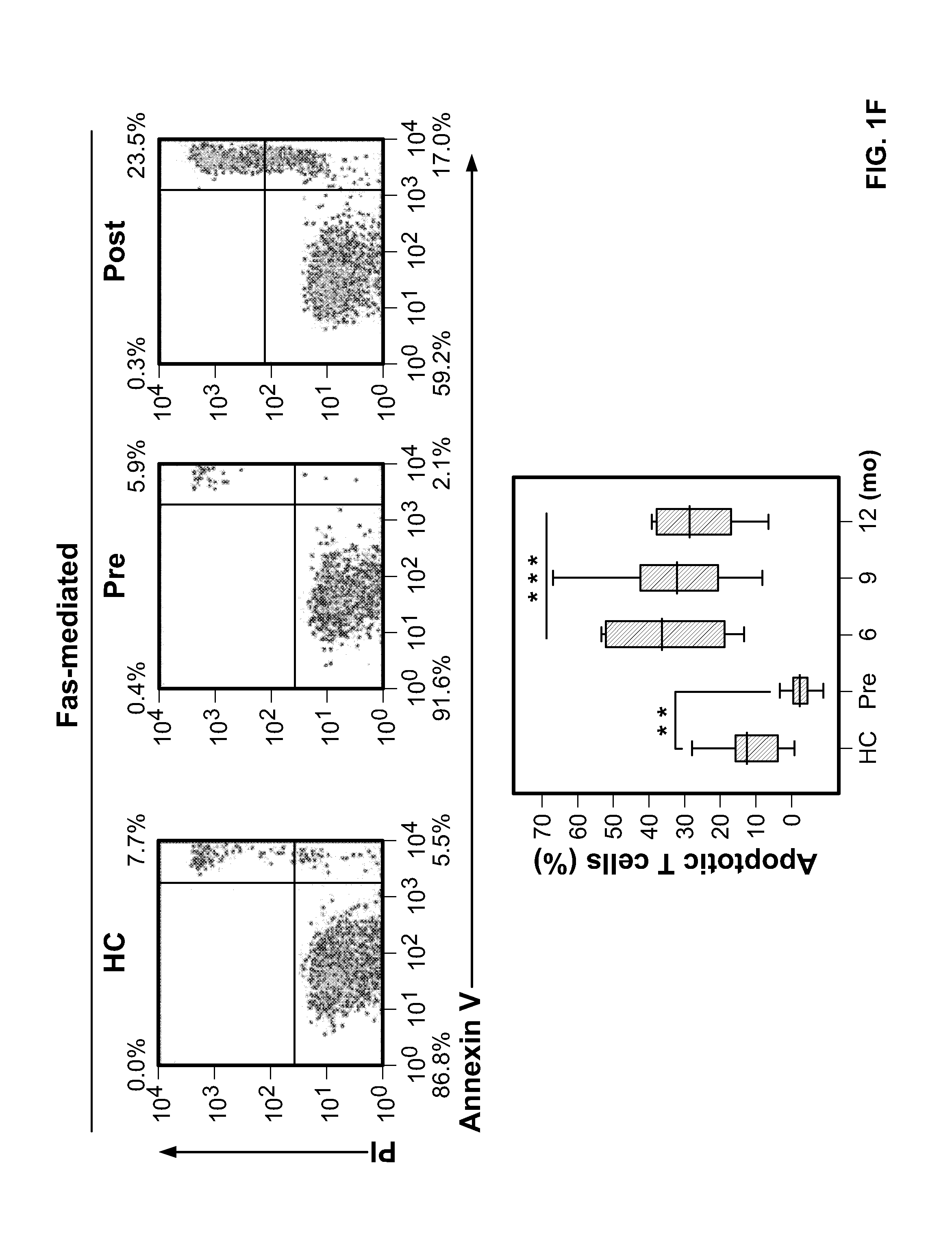Methods and compositions for diagnosis and treatment of autoimmune disease secondary to multiple sclerosis
a technology of autoimmune disease and composition, applied in the direction of immunological disorders, instruments, extracellular fluid disorders, etc., can solve the problems of rapid, profound, prolonged lymphopenia, difficult to study in humans, etc., to improve risk management in ms treatment, reduce ms treatment side effects, and improve risk
- Summary
- Abstract
- Description
- Claims
- Application Information
AI Technical Summary
Benefits of technology
Problems solved by technology
Method used
Image
Examples
example 1
Alemtuzumab Induces a T Cell Lymphopenia
[0080]A single dose of alemtuzumab resulted in the depletion of CD4+ and CD8+T lymphocytes to 5.6% and 6.8% respectively of baseline values at month 1, and 30.3% and 40.8% respectively at month 12 (data not shown).
example 2
T Cells from Patients with Untreated Multiple Sclerosis are Resistant to Cell Death
[0081]For various assays performed in this Example, different cross-sectional and longitudinal samples were used according to availability. As a prelude to measuring lymphocyte cell cycling after alemtuzumab, we examined the proliferative response of T cells, unstimulated or in culture with myelin basic protein (MBP) or the thyroid-stimulating hormone receptor (TSHr), between untreated patients with multiple sclerosis and normal controls (FIGS. 1A and 1B).
[0082]A. Peripheral Mononuclear Cell Cultures
[0083]Peripheral blood mononuclear cells (PBMCs) were isolated from heparinized blood by centrifugation on a Ficoll-Paque density gradient (Amersham Pharmacia Biotech). Whole PBMCs were immediately suspended in culture medium (RPMI) containing 1% penicillin, 1% streptomycin and 10% fetal calf serum (Sigma 55394) and adjusted to a concentration of 106 / mL viable cells (determined by trypan blue exclusion). T...
example 4
T Cells from Untreated Patients with Multiple Sclerosis Under-Express Caspase 3
[0091]A. mRNA Analysis
[0092]PBMCs, immediately ex-vivo or after culture with MBP or polyclonal stimulation, were positively separated, using 20 μL of magnetic beads (Miltenyi Biotec; CD19 Microbeads, CD3 Microbeads, CD14 Microbeads) per 1×107 cells loaded into a MACS® LS Column. Magnetically retained cells were eluted, washed and stored in RNAlater™ at −70° C. (cell purity consistently 95-98%, data not shown).
[0093]Fas, FasL, Bcl-2, Bcl-X1, Bad, Bax, Bid, Bim, Survivin, c-FLIP, and Caspase 3, 8 and 9 expression was determined by semi-quantitative RT-PCR. mRNA was extracted from cells stored in RNAlater™ using the RNEASY Mini Kit (QIAgen) and reverse transcribed to cDNA using the PRO-STAR First Strand RT-PCR Kit (Stratagene). PCR primers and probes were designed using PRIMER EXPRESS (PE Biosystems, Foster City, Calif., USA), and purchased from Oswel DNA service. mRNA sequence information was obtained from ...
PUM
| Property | Measurement | Unit |
|---|---|---|
| time | aaaaa | aaaaa |
| size | aaaaa | aaaaa |
| frequency | aaaaa | aaaaa |
Abstract
Description
Claims
Application Information
 Login to View More
Login to View More - R&D
- Intellectual Property
- Life Sciences
- Materials
- Tech Scout
- Unparalleled Data Quality
- Higher Quality Content
- 60% Fewer Hallucinations
Browse by: Latest US Patents, China's latest patents, Technical Efficacy Thesaurus, Application Domain, Technology Topic, Popular Technical Reports.
© 2025 PatSnap. All rights reserved.Legal|Privacy policy|Modern Slavery Act Transparency Statement|Sitemap|About US| Contact US: help@patsnap.com



